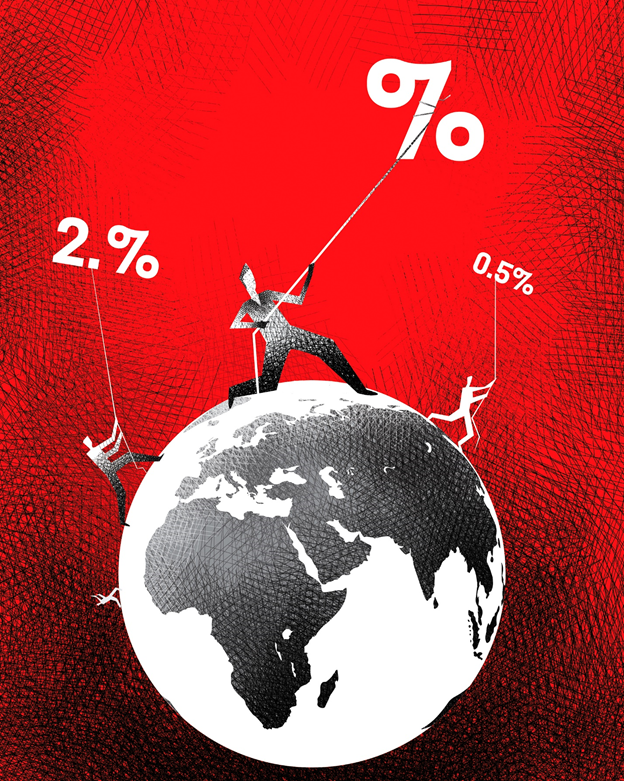What does a Stock Exchange mean for a country?
A country’s stock exchange is the reflector of its economy. It covers all the industries across various market segments/sectors of the economy. The stock exchange serves as a ready market, where people can buy and sell shares of corporations, as well as it enables the companies to raise funds for their growth and expansion. Moreover, these stock exchanges oversee that the functioning of stock trading is being conducted as per the rules and guidelines.
What is the New Zealand Stock Exchange?
Popularly known as the NZX, The New Zealand Stock Exchange (NZX:NZX) is the prime stock exchange of the country. It is also known as Te Paehoko o Aotearoa in Maori. Based in Wellington, it provides a marketplace to purchase and sell securities, thereby generating wealth for the country's economic growth and progress and enables the growth of the markets in which the NZX operates.
Moreover, through its wealth technology business, the NZX offers wealth management services to numerous NZ advisers.

Summary
- The national stock exchange of New Zealand is known as the NZX (the New Zealand Stock Exchange) and it is also a listed company.
- It has come a long way since the 1860s, when the first local stock exchange was established in the country.
- It houses some of the most successful and renowned companies in the world, with a gross total market capitalisation exceeding NZ$185 billion.
- To ensure its smooth and transparent functioning, the NZX is monitored by a regulatory body known as 'NZ RegCo.’
- The NZX covers all the major sectors of the economy, be it healthcare, utilities, industrial, and communication services, etc.
Frequently Asked Questions:
When was the NZX established?
- A brief history of the NZX
NZ’s first local stock exchange came into existence in the 1860s in Dunedin during the gold rush. Other regional exchanges were established in Auckland, Reefton and Thames in the 1870s, thereafter in Wellington, in the 1880s, followed by Christchurch in 1900.
The Stock Exchange Association of New Zealand came into being in 1915; before that, all the above-mentioned local stock exchanges conducted their trading operations independently.
With more changes, finally, in 1983, the New Zealand Stock Exchange began its life.
Following the 1987 stock market crash, a corporate body was established consisting of a chairman along with a board of directors for improved governance.
Finally, in 1991, the exchange adopted a computerised trading system.
The New Zealand Stock Exchange underwent demutualisation in 2003 and got listed. Moreover, it changed its name to the NZX.
Since then, the NZX is managed and owned by the shareholders, with brokers acting as market participants.
Who controls the NZX

Source: Copyright © 2021 Kalkine Media
Currently, Mark Peterson is the Chief Executive of the NZX, with Graham Law as the CFO and Joost Van Amelsfort as the Chief Executive of NZ RegCo.
How many markets does the NZX operate?
NZX operates several markets, some of them are as following:
- NZX Main Board (NZSX)
- NZX Debt Market (NZDX)
- NZX Dairy Derivatives
- NZX Equity Derivatives (NZCX)
- Fonterra Shareholders' Market (FSM).
Which are the key indices of the NZX?
The NZX furnishes a range of indices because of commercialisation, the names of these indices begin with S&P/NZX. Some of them are:
- S&P/NZX 50 Index
- S&P/NZX 20 Index
- S&P/NZX 10 Index
- S&P/NZX MidCap Index
- S&P/NZX SmallCap Index
- S&P/NZX Primary Sector Index
- S&P/NZX All Energy
- S&P/NZX All Materials
- S&P/NZX All Industrials
- S&P/NZX All Consumer Staples
- S&P/NZX All Health Care
- S&P/NZX All Financials
- S&P/NZX All Information Technology
- S&P/NZX All Communications Services
- S&P/NZX All Utilities
- S&P/NZX All Real Estate
Which products are available at the NZX?
Apart from trading in shares of various companies, the NZX also provides a variety of investment products and services, such as:
- Superlife
- Exchange Traded Funds (ETFs)
- NZX Data Products
- NZX Wealth Technologies
- Dairy data and insights
- NZX virtual Trading
How many companies are listed on the NZX?
Currently, there are 188 companies listed on the NZX with a total market capitalisation of more than NZ$185 billion. Some of its largest and renowned companies are:
- Fisher & Paykel Healthcare Corporation Limited (NZX:FPH; ASX:FPH)
- Westpac Banking Corporation (NZX:WBC; ASX:WBC)
- Australia and New Zealand Banking Group Limited (NZX:ANZ; ASX:ANZ)
- Meridian Energy Limited (NZX:MEL; ASX:MEZ)
- Auckland International Airport Limited (NZX:AIA; ASX:AIA)
- Spark New Zealand Limited (NZX:SPK; ASX:SPK)
- Mainfreight Limited (NZX:MFT)
- Contact Energy Limited (NZX:CEN; ASX:CEN)
- Ryman Healthcare Limited (NZX:RYM)
- Fletcher Building Limited (NZX:FBU; ASX:FBU)
Which sectors are covered under the NZX?
The New Zealand Stock Exchange majorly covers all the key sectors of its economy.
These include healthcare, utilities, industrials, real estate, communication services, materials, consumer staples, consumer discretionary, financial, information technology and energy.
Who regulates the NZX

Source: Copyright © 2021 Kalkine Media
To ensure that the functioning of the NZX is being conducted in a just and smooth manner, NZX Regulation Limited (NZ RegCo) was launched in December 2020. It is a separate and independently governed regulatory body. Some of its major functions include:
- Monitoring and ensuring compliance with the NZX rules pertaining to market listing.
- Working closely with FMA and to keep a check on insider trading, market manipulation, etc.
What are the trading hours of the NZX?
The normal trading hours of NZX are enumerated below:
- NZX Main Board - 10:00 am to 4:45 pm
- NZX Debt Market - 9:00 am to 4:45 pm
- NZX Dairy Derivatives – 7:00 am to 9:58 pm
- NZX Equity Derivatives – 9:45 am to 5:13 pm
- Fonterra Shareholders' Market – 10:00 am to 4:45 pm
How to start trading on the NZX?
Trading in New Zealand Stock Exchange is simple and hassle-free. One needs to contact an NZX market participant to commence trading on the NZX.
Does the NZX pay dividend?
The NZX had held its Annual Shareholder Meeting on 8 April 2021 and had declared its annual results for 2020 on 17 February 2021. The NZX paid a final dividend of 3.1 cps on 26 March 2021, thus bringing the total FY20's dividend to 6.1 cps.
 Please wait processing your request...
Please wait processing your request...